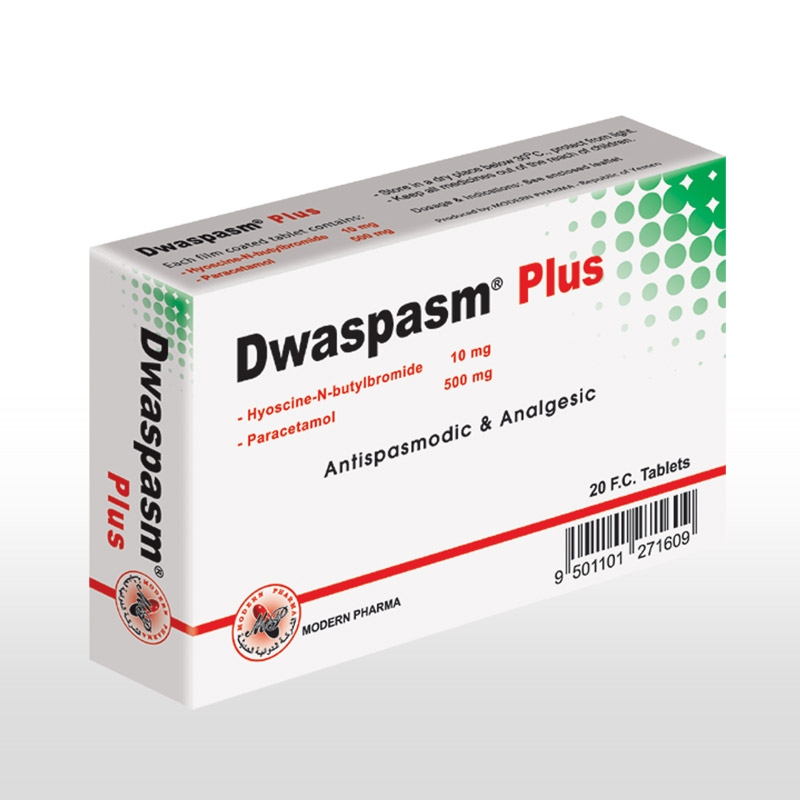DWASPASM Plus
- Hyoscin-N-Butylbromide ia a semisynthytic derivative of scopolamine,and has an antimuscarinic effect where it has peripheral anticholinergic and para-sympatholytic
actions having a ganglion-blackade effect on the visceral smooth muscle, and inhibiting the
muscarinic effect of acetylcholine.
- Due to these basic characteristics, it has a specific anti-spasmolytic effect on the smooth muscle of
gallbladder tract, urogential system organs and gastrointestinal tract.
- The analgesic effect of paracetamol increases the analgesic effect resulting from the spasmolytic
effect, combining the spasmolytic and analgesic effect. This combined efficacy is valuable in the
treatment of paroxymal pain in smooth muscle.
- After oral administration, Hyoscin-N-Butylbromide is absorbed 8 to 10%. Although it has a very
short half life, it reaches to high tissue concentrations particulry in liver, kidney and gastrointestinal
tract tissues due to its high affinity.
- Nearly half of the amount absorbed after oral administration (8 - 10%) is metabolized in the liver .following oral administration 0.7 to 2% is execrated in urine .
- Hyoscin-N-Butylbromide is quaternary ammonium compound and a low lipid solubility although
it entirely ionized under normal PH levels in the body liquids. Thus it penetrates less from the cell
barrier, and it has a limited passage to the blood brain barrier and intraocular liquids.
- Paracetamol is rapidly absorbed through gastrointestinal tract and it diffuses equally to the tissues. It
first transforms into glucuronide through conjugation, and subsequently metabolized in liver, which
in turn in-activate paractamol.
- The elimination half-life of paracetamol is approximately 2 - 4 hours, which is longer in children.
It is principallyexcreted by the kidney.


